In Chile, FAB13 poses fablabs as models for society
Published 7 September 2017 by la rédaction
The annual conference of MIT-approved fablabs was held in Chile from July 31 to August 6. Constance Garnier, an expert on the French scene, reports back from Santiago.
Every year for the past 13 years, the international fablab network has been coming together at a single location on the globe for one week. The program features talks, workshops, workgroups to stimulate the brain, as well as more casual moments to collect business cards and cultivate friendships.
This summer (or rather winter in Latin America), FAB13 took place in Santiago, Chile, at the foot of the Andes, from July 31 to August 6. The inaugural fabconference, reserved for members of the network, was attended by some 700 participants in the ornate venue of the Catholic University of Chile, according to the organizers. About 850 people attended the symposium in the modern Corpartes auditorium. Finally, more than 20,000 visitors came to the weekend Fabfestival at the Gabriela Mistral Cultural Center.
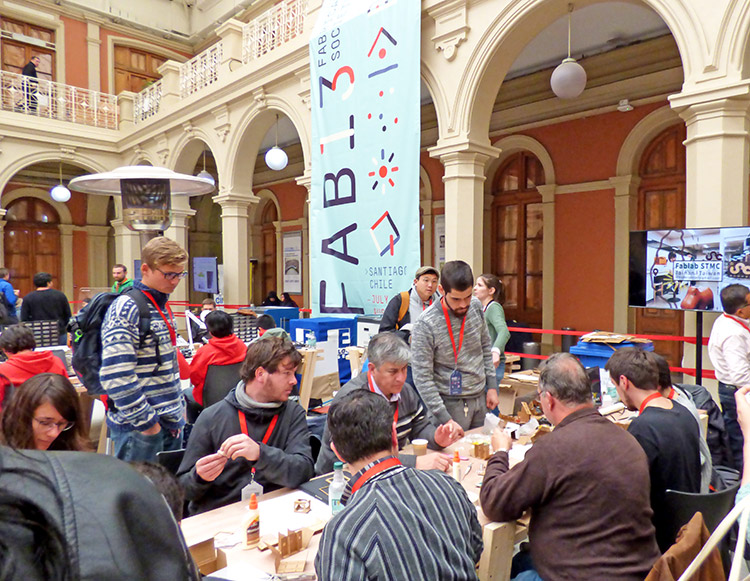
While the meeting draws attention to the work accomplished by the fablabs throughout the year, it’s above all an opportunity to foster the human relationships on which cooperation within the network depends. We bask in our common values, we gargle on our successes, we share excitement for what follows and, if the sparks fly, we leave with the fuzzy feeling of belonging to a big family. And then we report back to our own community.
The festivities began even before the event opened, with drinks. We all met at Radicales, an unusual bar that wears its name well—on each table, menus were disguised as political newspapers, with explicitly named à la carte offers such as “Castro is not dead”. This bar became our fab headquarters for the week.

The event opened with a speech by Neil Gershenfeld, founder of the first fablab at the MIT MediaLab and the Fab Academy. The “father” of the fablab network is known to address the audience of every FABX in the grand format of morning mass. He retraces the history of the fablab movement, reaffirms (his) vision, specifies the social transformations he intends to participate in, and explains how the network is evolving.
Inaugural speech by Neil Gershenfeld:
#neilGershenfeld #benlaurie #kateadamala #fab13 #fab13santiago #corpartes #diseñouc
A post shared by DiseñoUC (@disenouc) on
In the audience (of a few hundred), the “elders” nodded as they recognized classic anecdotes, while the “newbies” were already fired up by Neil’s fiery vision of the radiant future of fablabs: Since the almost 20-year-old movement grew from a few labs to a thousand, it could grow to… one million in the next 20 years. After citing recent progress such as regional antenna of the Fab Foundation, the extension of the Fab Academy to the Bio Academy and the Fabricademy, and the developing concept of the Fab City, he compared the evolution of fablabs to the miniaturization of computers.
“In the mini computer era, from a computer that could fill a room, the technology of the Internet has long since moved on and on to end up into your pocket. But the organizations that were invented at the mini computer period still define the Internet and what we do. And that is what is happening here today. As we go from a hundred to a thousand to a million to a billion to a trillion, the fablab will one day fit in your pocket. The fablab will become your pocket, literally.”
Neil Gershenfeld
“What we are inventing,” he adds, “—if anybody could make anything anywhere—turns on its side the current forms of education and involves creating a whole new set of organizational capacities. And this thing that almost seems like a new sense of ‘how do we organize ourselves’, that’s really the project. (…) We are creating the kind of organization we are going to be living with the next few decades.”
To motivate the troops, Neil evokes the ever-evolving chronology of fablabs, which follows his vision for the movement. The age of fab 2.0 and machines that make machines (Machines that Make project) is open, he proclaims. Present fablabs feel useful to society, actors of history and less lonely in what sometimes seems like a small local struggle.
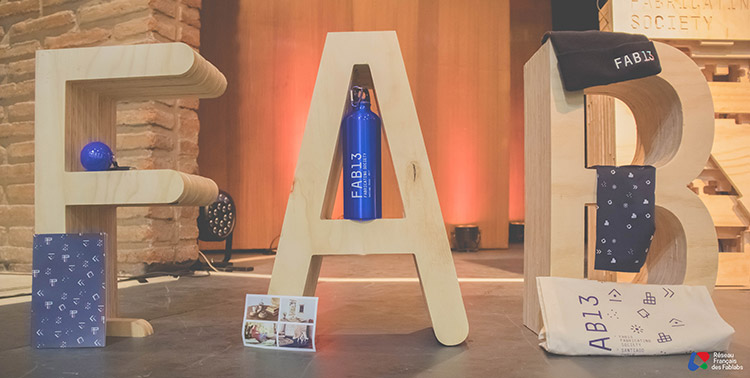
As the charismatic leader of the movement, Neil Gershenfeld certainly plays a fundamental role in the development of fablabs for more than 15 years, and he receives many expressions of gratitude and acknowledgement from the network. However, the fact that he opens and closes the annual event, as well as his involvement in its programming, raises questions about the community’s capacity to express other visions for a movement that proclaims to be horizontal, collaborative and plural.
This year, the organizing team of Fab Lab Santiago was shouldered by six other Chilean fablabs (three of which are under construction). We especially appreciated the “made in fablab” scenography, sober and pleasant, in which we basked throughout the week.
The organizing team took advantage of the event to build closer relationships with other South American fablabs. 12 of the 14 labs in the Latin-American network Fab Lat (Argentina, Bolivia, Brazil, Chile, Colombia, Costa Rica, Ecuador, Salvador, Peru, Puerto Rico, Uruguay and Venezuela) coordinated with each other for six months to design a collective pavilion, which was finally assembled during the week and exhibited at the Fabfestival. Even if they fell short of their initial ambition to integrate electronics into the installation, this federating project heralds future collaborations within Latin America.
Pavilion built by Fab Lat, the network of South American fablabs:
FAB14, 15, and even 16
The FABX event changes country every year—in 2016 we were in Shenzhen, China, in 2015 in Boston, etc. How are the host cities chosen? Just like at the Olympics—on the first day of the event, the candidate fablabs make their pitch in public. During the week, Neil informally surveys the participants, and finally makes his decision with the complicity of Sherry Lassiter, president of the Fab Foundation since its inception. On the last day, they announce the “chosen” team to host FABX in Y+2.
In Santiago, they explained that, as in Lima during FAB7, it was impossible to settle on a single candidate… So the good news was twofold: In 2019, network will meet in Cairo, Egypt, for FAB15 (pitched by one of the fablabs created by the Egyptian multinational Giza Systems); then in 2020 it will be in Montreal, Quebec for FAB16!
Fab 15 will be in Egypt and Fab 16 en Canada. Congratulations! pic.twitter.com/5ahdKWcEDp
— Fab13 Santiago (@fab13santiago) August 4, 2017
Video pitch for FAB15 in Egypt:
With all the excitement, we almost forgot that FAB14, in summer 2018, will be held in France. The theme was already announced in Santiago: “Fabricating resilience”.
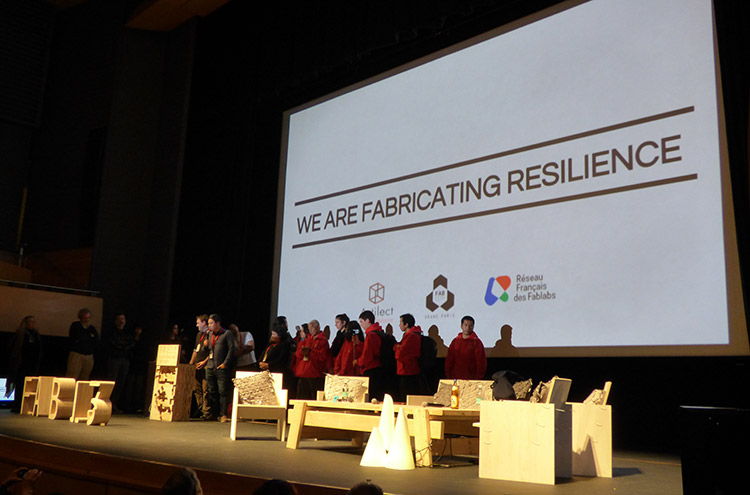
With all this in mind, I examined the different visions of the future of fablabs floating in the (fresh) Chilean air. There was something for everyone…
Programmable materials
From a technical perspective, it’s only the beginning of “machines that make machines” fab 2.0. The popularity of this concept suggests that a wave of modular machines could be deployed in fablabs within the next two years. I start to dream about how every one of these projects is a new opportunity to collaborate in practice, now that a critical mass of fablabs has formed.
The concept of programmable materials was another hot topic. During the symposium, the projects of Self Assembly Lab by its director Skylar Tibbits made an impression (on me, in any case). The teams of this lab are working on new fabrication processes such as reversible 3D printing using ropes and stones or printing in gel (which removes the gravity factor, accelerates the process and expands the possibilities).
Skylar Tibbits talks about programmable materials at FAB13:
Skylar Tibbits ahora en @fab13santiago ?#fab13 #Fab13Santiago pic.twitter.com/8ROoPNAHBk
— j (@jimenacalifa) August 4, 2017
But most impressive and promising are programmable materials ranging from wood to textiles to carbon fibre… Directly integrating into a material the capacity to autonomously transform its shape or its properties announces the emergence of 4D printing. In Santiago, it presented a first scenario for the future, in which we increasingly interact with automation. This leaves us to contemplate the second scenario, according to Tibbits, where “materials are robots. They have the capability to sense and have embedded logic, and therefore the future could be material robots rather than industrial mechanical robots. Today we program the machines, and tomorrow we will program matter itself.”
The future is also this fashion show of fab textiles and fashion-tech at FAB13:
Education by doing
On the social side, according to the participants, fablabs will be platforms at the core of educational systems that will help counter the digital divide, rather than maintaining it, as is often the case.
This ambition is no less than a conviction for Martin Oloo in Kenya. He is struggling to reopen the ARO fablab, which is situated in a rural area. In 2008, supported by the Fab Foundation, ARO was the 25th fablab in the world to open its doors… before closing them in 2011, for lack of funding. Since 2015, Martin’s challenge is to revive the space without giving in to the sirens of the big city of Nairobi, where all the technological resources are concentrated. This social worker went all the way through the Fab Academy in order to fully achieve his goal: “I don’t have any technical background, I am a social worker. So when I asked the Fab Foundation [to reopen the fablab], they were like, ‘How can you do it?’ I answered that I have one profession called Passion. And that is what I have.”
I was especially touched by his determination and his clarity. Martin hopes to participate in youth training, as well as regional economic development, while facilitating entrepreneurship in his very rural region, where access to electricity and by extension to the Internet remains a major issue… These days, he repairs abandoned machines and benefits from the help of other members of the network, such as Jens Dyvic of Fellesverkstedet fablab in Oslo, so that he could leave FAB13 with a working machine. To be continued!
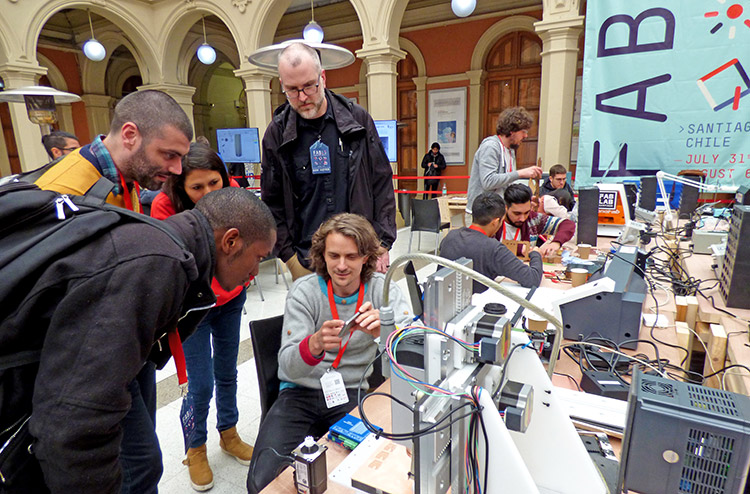
The fabsociety
While waiting for the future, the 2017 theme of FAB13, “Fabricating society”, shifted the focus of the annual conference from technology itself to its social applications. This was confirmed by Sherry Lassiter, for whom the shift results from the global dynamics of the network: “I think we have made a turn in the last couple of years, from just talking about technology and social impact to actually doing it—for example, seeing digital fabrication being brought into all classrooms or in many sustainable ways into cities, through uses we wouldn’t have expected.”
Sherry Lassiter, president of the Fab Foundation, on the FAB13 stage:
This is particularly the case of the project Making Sense, presented by its coordinator Mara Balestrini of Fablab Barcelona. This “Fab City” oriented program, funded by the European Commission, supports citizen groups to tackle local problems using digital fabrication and open design, based on data captured by various sensors.
During a round table, Mara presented the action carried out by residents of Plaça del Sol in Barcelona, who had been suffering for over ten years from noise pollution due in part to the neighborhood nightlife. Once they had established, thanks to their sensors, that standard noise limits had been largely exceeded on the plaza, the residents were able to mobilize the municipal authorities, which until then had met their complaints with a deaf ear. As a result, the municipal prevention campaign was deemed legitimate by the residents. The Making Sense platform has developed other projects in Barcelona, Amsterdam and Pristina (Kosovo) on topics such as gamma rays and air pollution.
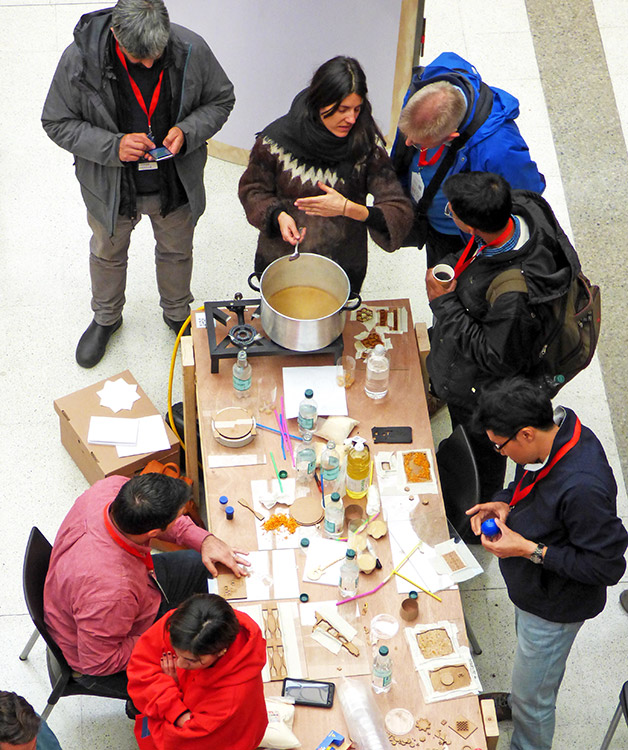
Making Sense experiments with new modalities for mobilizing citizens based on capturing data and the use of open data. It demonstrates in concrete terms how digital fabrication, made accessible to all, can become a catapult for political action by enabling any collective to build its own expertise on a local environmental situation and offer, or develop its own, solutions.
Fab Academy graduation ceremony:
Fab academy graduates pic.twitter.com/vC6r9iCuf1
— Fab13 Santiago (@fab13santiago) August 4, 2017
Floating Fablab: coming soon
We also received an update on the Floating Fablab. One year ago, Makery introduced this incredible project… After co-founding the first fablab in Latin America in Lima in 2010, Beno Juarez currently coordinates the Latin American network while leading this project, which associates several fablabs in countries traversed by the Amazon River. The boat, which hosts three labs (biolab, materiallab and fablab) will travel from village to village along the Amazon in order to accompany rural populations in developing local economies “by valorizing what exists and especially by protecting biodiversity”, Beno explains. For this Peruvian born in the jungle, the best way to protect biodiversity is to make it the primary resource in education and innovation. The boat isn’t sailing yet, but the projects that it will carry are making progress. Among them, my favorite was the 3DTree, a machine that prints “magic fruit”…
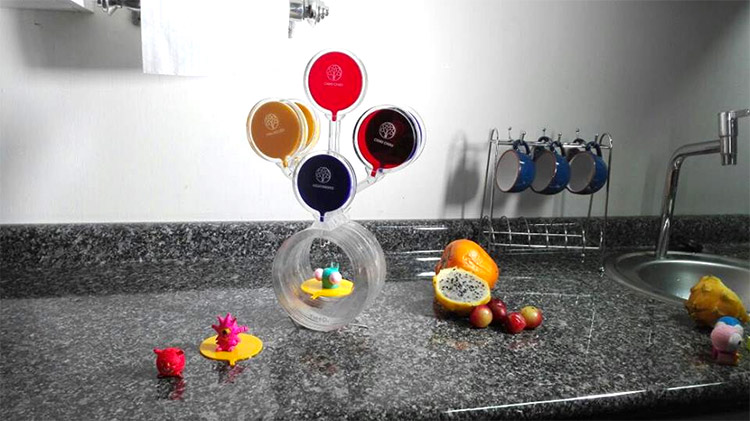
Say what? The 3DTree combines cartridges of dehydrated fruit to create “tailor-made fruit”. It’s a response to the local problem of food loss, extending the life cycle of produce, reducing their weight by 80% and making their transportation affordable to small producers.
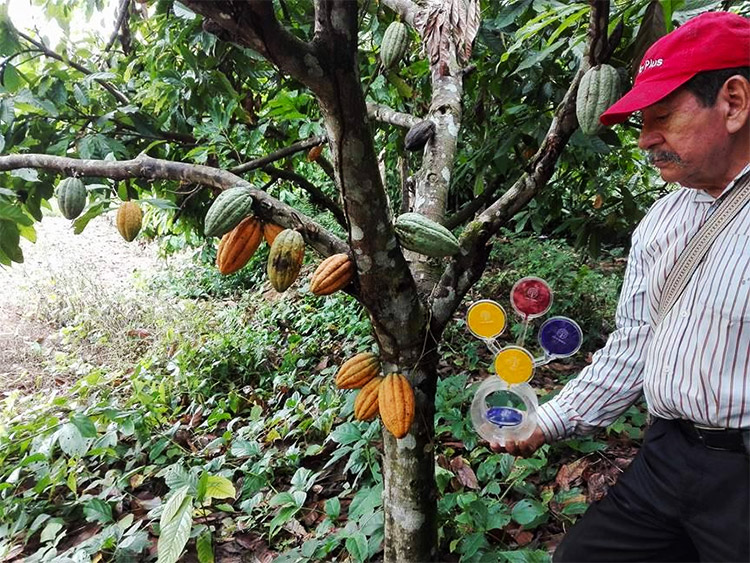
It’s also a way to incite producers to distinguish themselves by producing varieties of fruit that are specific to their region and thus to cultivate biodiversity. The Floating Fablab, carrying other projects that will enable Amazonia residents to generate an economy that is respectful of their environment, is one of the most promising initiatives of the network… for a few years now. The time required for its realization reveals how difficult it is for fablabs to carry out large-scale projects, while establishing their legitimacy within institutional and private ecosystems.

Constance Garnier, PhD in Management Science at the Industrial Research Chair in frugal innovation at Telecom ParisTech, is researching her thesis on the impact of fablabs on the management of corporate innovation. This historical actor of the French maker movement is an active member of Artilect fablab in Toulouse, where she has co-organized the Fablab Festivals from 2015 to 2017
More photos of FAB13 by Alexandre Rousselet of RFFLabs (French fablab network organization)
